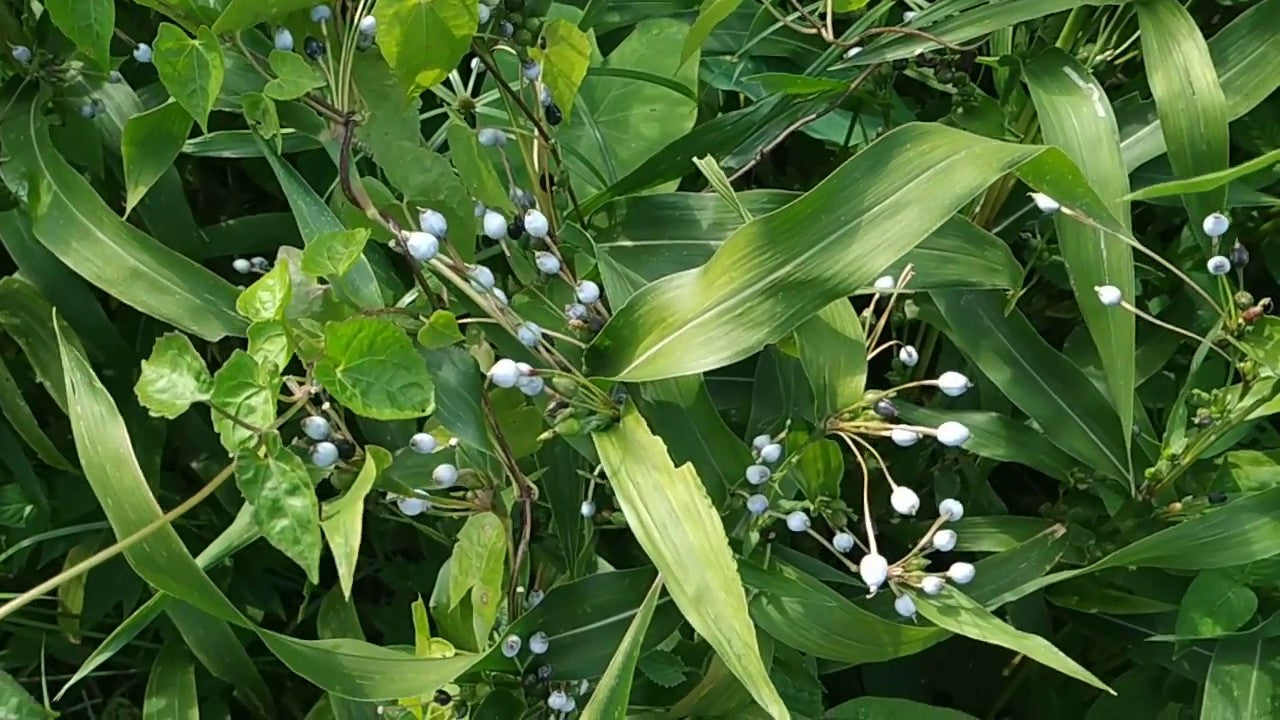
Dharaseeds
Job's Tears Seeds - Job's Tears
Estimated Free Delivery between April 16 and April 19.
Secured Payment Methods
Your transaction is protected with advanced security measures to keep your information confidential
Job's Tears (Coix lacryma-jobi) is an ancient cereal grain and medicinal plant that has been cultivated for centuries across Asia and Africa. Known for its striking, tear-shaped seeds, Job's Tears is often used in traditional remedies and can be grown as a decorative plant or for its edible seeds. This hardy annual thrives in warm, sunny climates and is highly adaptable to various growing conditions.
Key Benefits
- Nutritional Value: Job's Tears seeds are highly nutritious, packed with protein, fiber, and essential vitamins and minerals, making them a great addition to your diet.
- Medicinal Uses: Job's Tears have been used in traditional medicine for their anti-inflammatory, diuretic, and detoxifying properties.
- Ornamental Appeal: The plant's graceful, arching foliage and unique tear-shaped seeds make it a striking addition to ornamental gardens.
- Drought Tolerant: Once established, Job's Tears are fairly drought-resistant, making them suitable for areas with limited water supply.
- Soil Health: Job's Tears can improve soil health by fixing nitrogen and enriching the soil for other plants.
Plant Features
- Plant Characteristics: Job's Tears is a tall grass that can reach 3 to 6 feet in height, with arching leaves and long, drooping flower clusters. The seeds resemble small, tear-shaped pearls and are often used for crafting or as beads.
- Size: Grows 3–6 feet (90–180 cm) tall, with a spread of about 18–24 inches (45–60 cm).
- Growth Habit: The plant grows upright, with long, slender leaves and small, inconspicuous flowers that develop into the distinctive, tear-shaped seeds. It thrives in both moist and dry conditions and can be grown as a companion plant in gardens or for ornamental purposes.
Planting Instructions
Planting Season
- Job's Tears is typically planted in the spring once the soil has warmed up. In regions with longer growing seasons, it can be planted in early spring for a summer harvest.
Planting Details
- Planting Depth: Sow seeds about 1/4 inch deep.
- Spacing: Space seeds 12–18 inches apart to allow for adequate growth.
- Soil Requirements: Prefers well-drained, fertile soil with a pH of 6.0–7.5. It can tolerate a variety of soil types, from sandy to clay.
- Sunlight: Needs full sun to thrive, though it can tolerate light shade in hotter climates. Job's Tears grow best in areas that receive 6–8 hours of sunlight a day.
Care Instructions
- Watering: Keep the soil consistently moist during the growing season, especially during dry spells. Water deeply to encourage deep root growth. However, be cautious not to overwater, as the plant does not like to be waterlogged.
- Fertilization: Fertilize with a balanced fertilizer or compost at planting time. Additional feeding can be applied halfway through the growing season to promote robust growth.
- Weeding and Mulching: Mulch around the base of the plant to help retain moisture and suppress weed growth. Regularly weed around Job's Tears to prevent competition for nutrients.
- Pruning: Job's Tears does not require regular pruning, but you can trim any dead or damaged leaves to encourage healthy new growth.
- Pest and Disease Control: This plant is generally pest-resistant, but watch out for common garden pests like aphids or leafhoppers. If necessary, use organic insecticidal soap to keep pests at bay.
Harvesting
- Maturity: Job's Tears reaches maturity in about 100–120 days from planting, depending on climate conditions.
- Harvesting Method: Harvest the seeds once the seed heads have dried on the plant. The seeds are typically ready to be collected when they turn brown or tan, and the seed heads begin to break open.
- Method: Cut the stalks and gently remove the seeds by hand or use a small tool to separate them from the seed head. Be careful not to damage the seeds during the harvesting process.
Storage
- Short-Term: Fresh Job's Tears seeds can be stored in a cool, dry place for up to a few weeks. If you plan to eat or use them soon, store them in an airtight container in a cool pantry.
- Long-Term: For long-term storage, Job's Tears seeds should be dried thoroughly before being placed in an airtight container. Stored in a dry, cool location, the seeds can last for up to a year.
Culinary Uses
- Grain Substitute: Job's Tears can be cooked like rice or barley and used in soups, stews, or grain bowls. It has a slightly chewy texture and nutty flavor.
- Health Drink: In traditional Asian medicine, Job's Tears are often used to make a healthy, cooling beverage, which is said to detoxify the body and improve digestion.
- Snacks and Baking: The seeds can be roasted and eaten as a snack, or ground into flour for baking.
Medicinal Uses
- Anti-inflammatory: Job's Tears are traditionally used in herbal medicine to treat inflammation and as a remedy for respiratory conditions.
- Diuretic and Detox: It is believed to promote urination and detoxify the body by flushing out excess fluids and toxins.
- Digestive Health: Job's Tears are sometimes used in traditional medicine to improve digestion and relieve bloating or indigestion.
Conclusion
Job's Tears is a versatile plant that offers both ornamental and practical benefits. Whether you are growing it for its unique appearance, health benefits, or as a grain substitute, it thrives in a variety of climates and conditions. Its striking seeds, nutritious value, and medicinal properties make it a valuable addition to any garden. Whether used as a food source, herbal remedy, or crafting material, Job's Tears is a plant with a long history and many uses.








